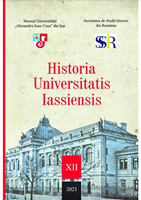Formarea continuă a cadrelor didactice primare în a doua jumătate a secolului al XIX-lea
Continuous Training of Primary School Teachers in the Second Half of the 19th Century
Author(s): Cristina GudinSubject(s): Cultural history, Social history, School education, History of Education, 19th Century, Sociology of Education
Published by: Editura Universităţii »Alexandru Ioan Cuza« din Iaşi
Keywords: continuous training; primary education; teaching staff; 19th century;
Summary/Abstract: In the second half of the 19th century, Romanian education went through important transformations captured in the law of public instructions from 1864, as well as in subsequent school laws that improved the provisions of the mentioned normative act. Although the principles of educational organization were modern, of Western inspiration, adapting to local realities and putting them into practice represented real challenges for the Romanian state involved in an extensive and expensive modernization process. In addition to the insufficiency of schools and facilities, the reluctance of the population regarding the training of children in school, the problematic quality of textbooks and programs, but also the problematic training of teaching staff members and the insufficiency of educational institutions capable of training competent teachers. The present study focuses on the ways imagined by the authorities to increase the professional quality of teachers, an important aspect given that they had a major impact on the children who attended primary schools, the only compulsory ones. Deficiencies in the training of teachers were well known to the authorities who regularly received incorrectly written requests, during school inspections they attended lessons that demonstrated the insufficiency of the pedagogical and specialized knowledge of the teaching staff, noted the poor results obtained in national competitions by those interested in starting a teaching career by occupying a vacancy. For these reasons, it was urgently necessary to involve teachers in training programs aimed at improving their professional quality. The issue of improving teacher training was so important that solutions such as didactic congresses and conferences, inspectors' suggestions, refresher courses, printing pedagogical publications were not applied successively, but simultaneously. The variety of forms of training demonstrates the determination of the authorities to provide schools with competent teaching staff, possessing an informational background as solid and extensive as possible, but also connected to the new trends in the field. Some of the forms of improvement mentioned, such as conferences, congresses and refresher courses, by the fact that they were carried out according to a certain pattern that required compliance with a program, traveling to another locality, demonstrating the extent to which the exposed information was appropriated, bearing the expenses for the duration of the respective activities, were sometimes perceived as coercive. This explains the tendency of some teachers to be absent from conferences or recommended courses, calling on the complicity of communal doctors for the certificates that justified their absence. A less restrictive way of improvement was the reading of pedagogical journals that were permanently and often free of charge available to teachers. The success of this form of improvement is also proven by the large number of pedagogical magazines of the time, all conforming to the same objective, namely improving the professional quality of primary education teachers. In their pages, interested readers learned information about: the most effective didactic methods and tools and their application methods, famous teachers and pedagogues, legislative changes, etc. Varied and organized more or less systematically, the methods of continuous training made their contribution to the professionalization of primary teaching staff in the second half of the 19th century to an extent that is difficult to quantify in the conditions where their relevance depended on the seriousness the involvement of each individual teacher.
Journal: Historia Universitatis Iassiensis
- Issue Year: 2021
- Issue No: 12
- Page Range: 83-93
- Page Count: 11
- Language: Romanian

